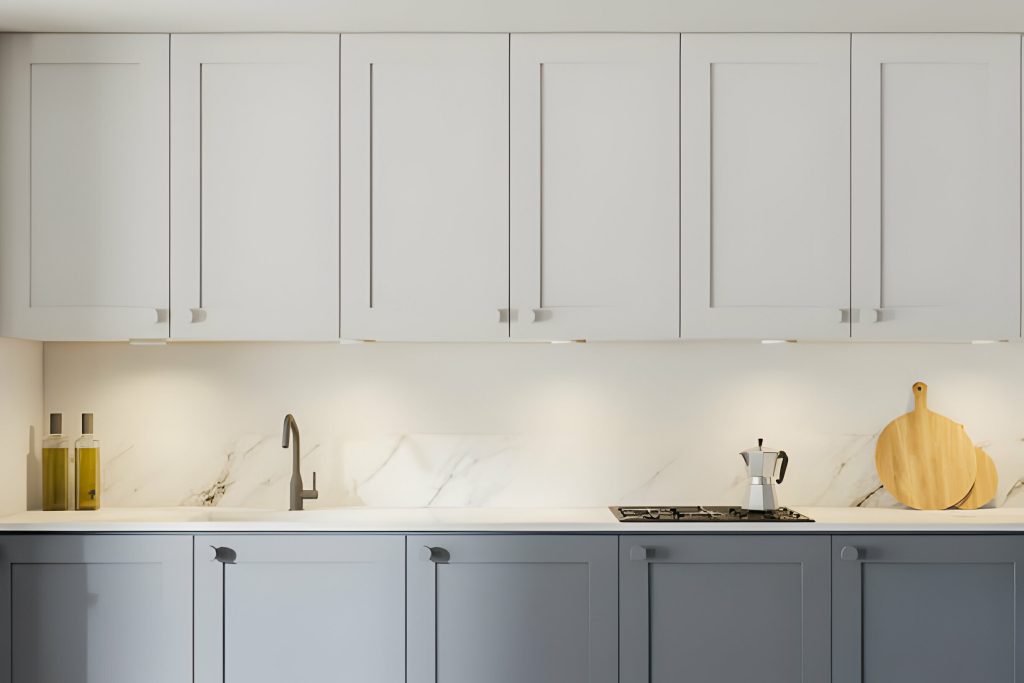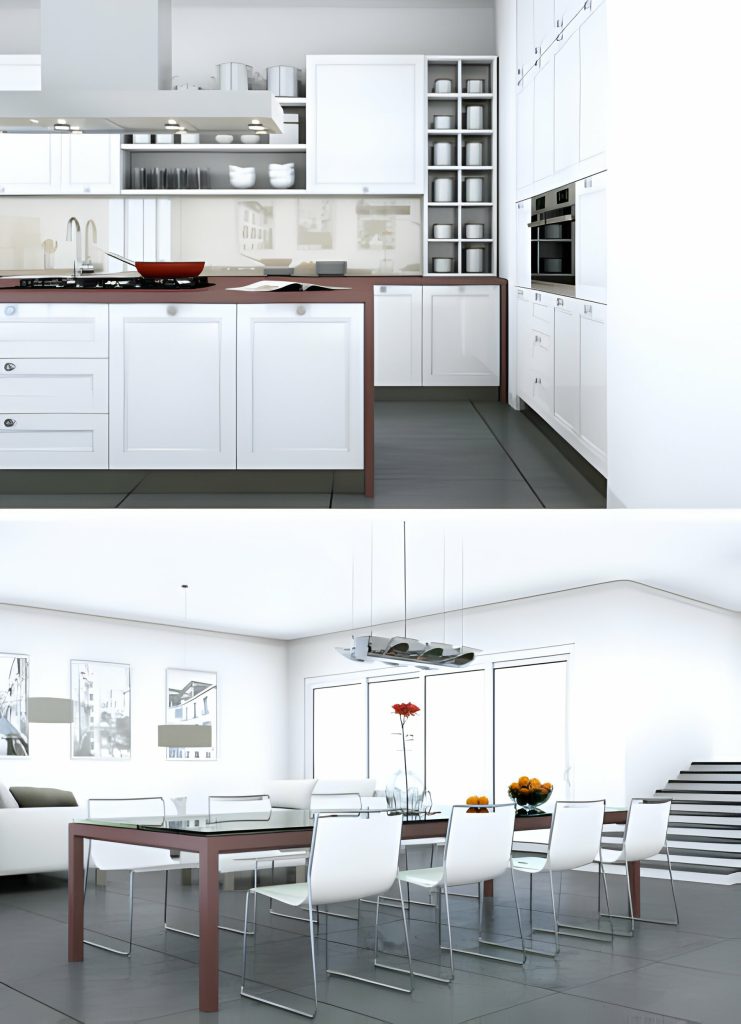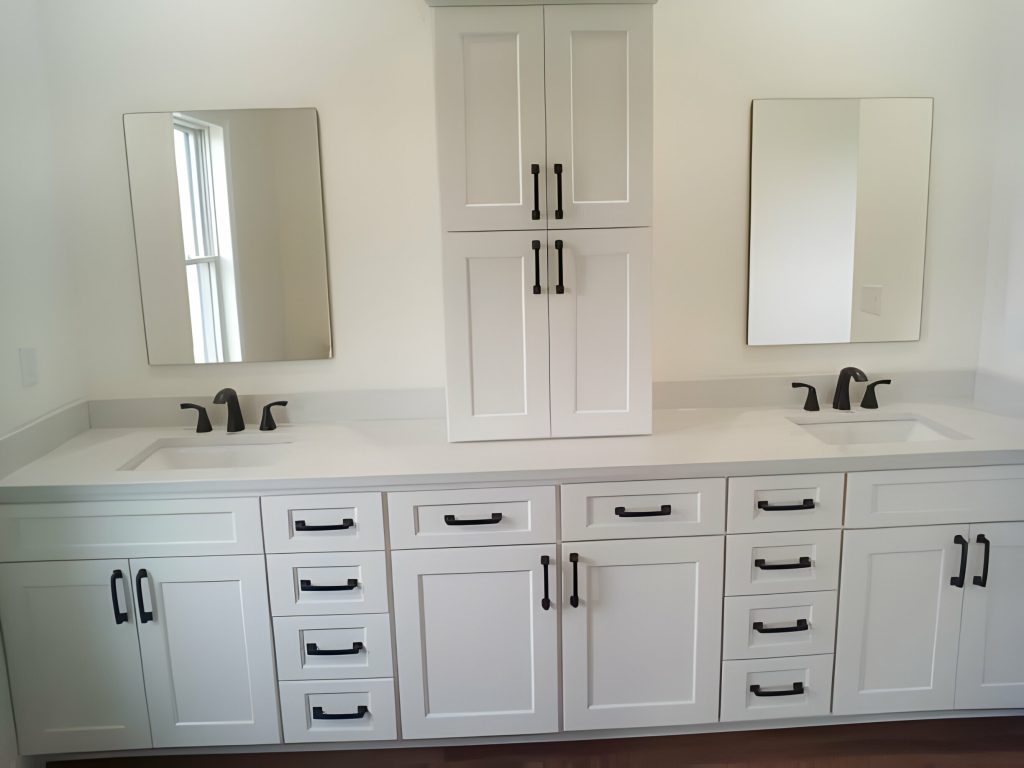Are your kitchen cabinet doors looking worn and outdated? It’s time to give them a fresh new look with a refinishing project! In this article, we’ll guide you through the step-by-step process of refinishing your kitchen cabinet doors. From assessing their condition to applying the chosen refinishing method, you’ll learn all the expert tips and tricks to achieve stunning results. So roll up your sleeves and get ready to transform your kitchen cabinets into a focal point you’ll be proud of!
Assess the Condition of Your Cabinet Doors
To begin assessing the condition of your cabinet doors, start by thoroughly inspecting them for any signs of damage or wear. Look for scratches, dents, peeling paint or laminate, loose hinges, or any other issues that may affect the overall appearance and functionality of the doors. If you come across minor damage, such as small scratches or chips, you can opt to repair them rather than replacing the entire door. You can use wood filler or putty to fill in any small holes or cracks, and then sand the area smooth for a seamless finish. For more extensive damage, such as large cracks or broken panels, it may be necessary to replace the door altogether. Once you have assessed the damage and determined which doors need repair or replacement, the next step is to thoroughly clean and sand the surfaces. Use a mild detergent or wood cleaner to remove any grease, grime, or residue that may have accumulated over time. After cleaning, lightly sand the doors to create a smooth surface that will allow the new finish to adhere properly.
Remove the Cabinet Doors and Hardware
Once you have assessed the condition of your cabinet doors, it is time to remove the cabinet doors and hardware. Properly storing the removed cabinet doors and hardware is crucial to ensure that they remain in good condition during the refinishing process. Start by labeling each door and its corresponding hardware so that you know where each piece belongs when it’s time to reassemble. This will help you avoid any confusion or frustration later on.
To remove the cabinet doors, you will need a screwdriver or drill with the appropriate bit. Begin by removing the screws or bolts that hold the hinges in place. It’s important to keep the screws and other hardware in a secure place, such as a small container or ziplock bag, so that they don’t get lost or misplaced. You should also consider upgrading the hardware for a fresh look. This is a great opportunity to update the style of your kitchen by choosing new handles or knobs that complement your refinished cabinet doors.
Once the doors are removed, find a clean and dry area where you can safely store them. Lay them flat to avoid warping or damage. If you don’t have enough space to lay them all out, you can stack them on top of each other, but be sure to place a soft cloth or towel between each door to prevent scratching. As for the hardware, keep it in a secure place, away from any potential damage or loss. By properly storing the removed cabinet doors and hardware, you’ll be able to complete the refinishing process with ease and maintain the integrity of your kitchen cabinets.
Prep the Surfaces for Refinishing
Now that you have removed the cabinet doors and hardware, it is important to properly prep the surfaces for refinishing. This step is crucial for achieving a smooth and professional-looking finish. The first task is to assess the condition of the cabinet doors and frames. Look for any areas that are damaged or have peeling paint, as these will need to be addressed before refinishing.
To start prepping, gather the necessary supplies. You will need sandpaper or sanding blocks of varying grits, ranging from coarse to fine. This will allow you to effectively remove any existing finish or roughen up the surface for better adhesion. Additionally, you will need cleaning supplies such as mild dish soap, warm water, and a clean cloth or sponge.
Begin by cleaning the surfaces thoroughly with the mild dish soap and warm water. This will remove any grease, grime, or dirt that may have accumulated over time. Once the surfaces are clean and dry, it’s time to sand. Using the appropriate sandpaper grit, start by sanding the surfaces in the direction of the wood grain. This ensures a smooth and even finish. Be sure to sand all areas, including corners and edges.
After sanding, wipe down the surfaces with a clean cloth to remove any dust or debris. This step is crucial to ensure a clean surface for refinishing. With the surfaces prepped and ready, you are now one step closer to achieving beautifully refinished kitchen cabinet doors.
Apply the Chosen Refinishing Method
Start by selecting and applying the chosen refinishing method to the kitchen cabinet doors. When it comes to refinishing kitchen cabinet doors, there are a few different methods you can choose from. The method you choose will depend on the current condition of your cabinets, the look you want to achieve, and your personal preferences.
One popular method is to use a paint sprayer. This allows for a smooth and even application of paint, giving your cabinets a professional finish. Another option is to use a brush and roller. While this method may take a bit more time and effort, it allows for more control and precision.
Before applying any refinishing product, it is important to choose the right products for your cabinets. Consider the type of wood your cabinets are made of and the desired finish. Different products are designed for different types of wood and finishes, so be sure to read the labels and choose accordingly.
Understanding the drying time requirements is also crucial. Some products require multiple coats with drying time in between, while others may require a longer drying period before they can be used. Take note of the manufacturer’s instructions and make sure to allow for sufficient drying time to avoid any mishaps.
Reinstall the Cabinet Doors and Hardware
Attach the cabinet doors and hardware back onto the kitchen cabinets to complete the refinishing process. After you have successfully applied the chosen refinishing method to your kitchen cabinet doors, it is time to reinstall them. This is a crucial step that requires attention to detail and precision.
Begin by carefully aligning each cabinet door with its corresponding cabinet frame. Make sure the hinges are properly lined up and attach the hinges back onto the cabinet frames using the provided screws. It is important to ensure that the doors hang straight and are level with the other cabinets.
Next, focus on reinstalling the hardware. This is an opportunity to give your kitchen cabinets a fresh and updated look. When choosing hardware, consider the overall aesthetic of your kitchen and select pieces that complement the style and finish of the cabinets. Whether you opt for sleek and modern handles or traditional knobs, make sure the hardware is securely attached to the doors.
Once all the doors and hardware are reinstalled, take a step back and admire your newly refinished kitchen cabinets. The reinstalling process may require patience and attention to detail, but the end result will be worth it. With properly attached doors and carefully chosen hardware, your kitchen cabinets will look brand new and add a touch of elegance to your space.





